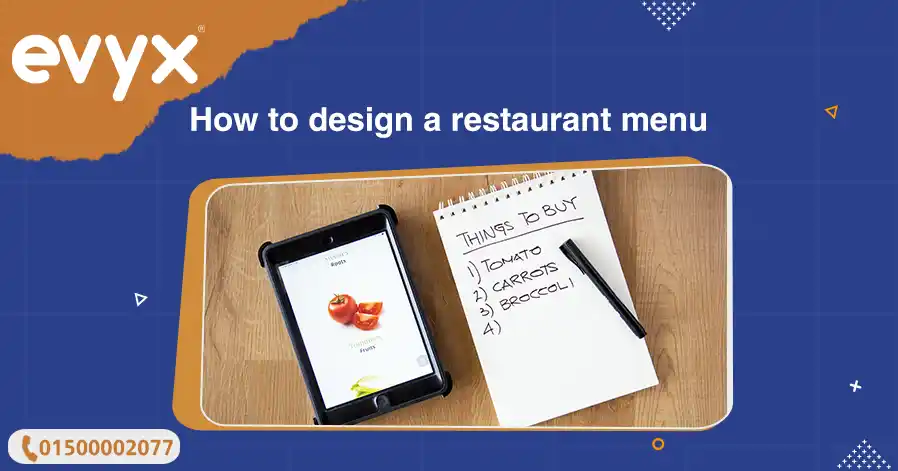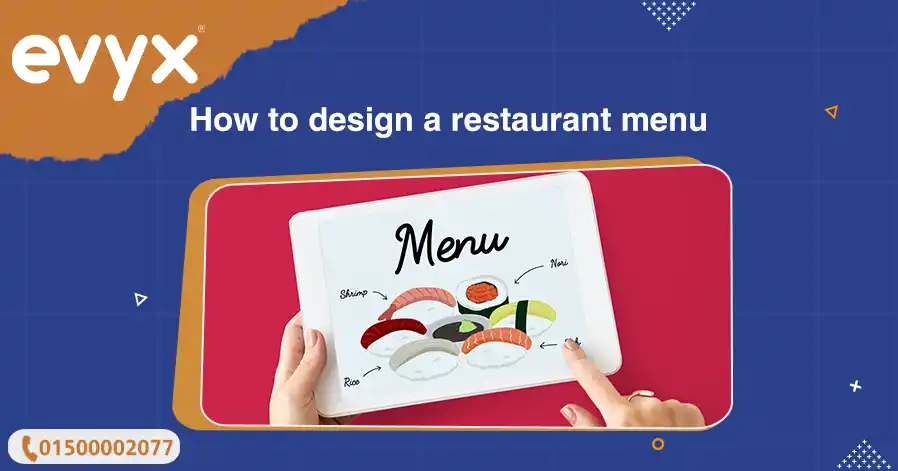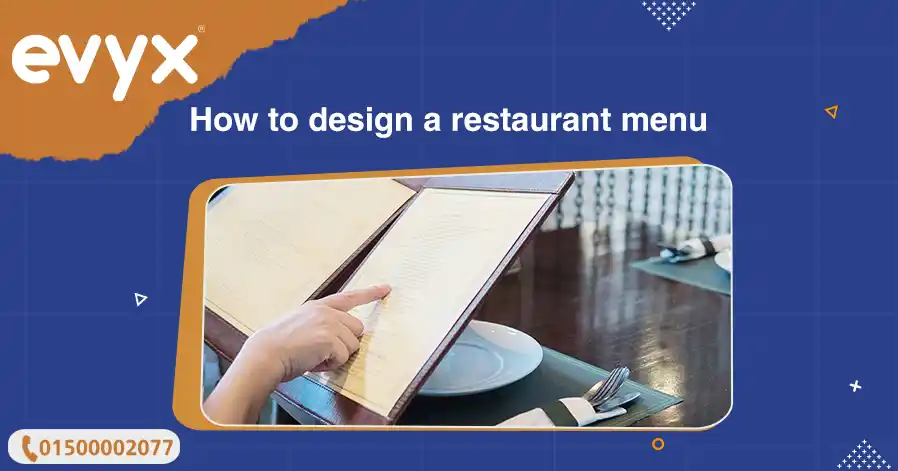Designing a restaurant menu is more than just listing dishes and prices — it’s a powerful marketing tool that directly influences customer choices, sales, and overall dining experience. If you’re wondering how to design a restaurant menu, this guide will walk you through the process from start to finish, combining design psychology, food storytelling, and technology.
Types of Restaurant menu design
How to design a Restaurant menu design, starts by understanding what kind of menu best fits your restaurant’s identity and customer expectations. The type of menu you choose affects layout, descriptions, and even the customer experience.
1- À la Carte Menus
Each dish is listed and priced separately. It offers maximum flexibility for diners and works well in fine dining or modern casual restaurants.
2- Table d’Hôte Menus
A fixed-price menu offering a limited number of course It. it is ideal for formal dinners or events where you want to streamline kitchen operations.
3- Buffet Menus
A flat fee allows access to a variety of dishes. Perfect for high-traffic, self-service establishments.
4- Tasting Menus
Curated, multi-course meals designed to showcase the chef’s creativity. Typically used in gourmet restaurants to elevate the dining experience.
Need help with best restaurant menu card design? At evyx, we bring your concept to life with premium layouts tailored to your cuisine and brand identity. Contact us to get started! Contact us via WhatsApp or Facebook—we’re here to help you achieve outstanding results.
Don’t miss to know What is Event Management?

Menu Layout and Design Principles
How to Design a Restaurant Menu starts with creating a compelling layout that subtly guides guests toward high-margin items and effectively reflects your brand identity.
Visual Hierarchy
Use focal points like boxes, icons, or images to highlight bestsellers. Guests usually read menus in a Z-pattern, so place high-profit items in the top-right corner.
Color Psychology
Colors evoke emotions and can influence appetite. Red and orange stimulate hunger, while green suggests freshness. Use brand-aligned colors to maintain consistency.
Typography Choices
Use no more than two fonts. A serif font might suggest tradition and elegance, while sans-serif feels modern. Make sure all text is legible in dim lighting.
Also you need to know The importance of media production
Crafting Menu Descriptions
How to Design a Restaurant Menu isn’t just about visuals — it’s also about language. Words sell. The way you describe each dish can significantly increase its perceived value and influence what guests choose to order.
- Descriptive Language
Use adjectives that trigger the senses: “succulent grilled chicken,” “hand-rolled artisan pasta,” or “velvety dark chocolate mousse.” - Highlighting Ingredients
Today’s diners care about sourcing. Emphasize organic, local, or seasonal ingredients to create appeal and trust. - Creating a Narrative
Tell mini-stories behind special dishes. For example, “Chef’s grandmother’s recipe from coastal Tuscany” makes the meal feel personal and exclusive.
You need to know How to increase sales with digital marketing egypt

Menu Item Categorization
How to Design a Restaurant Menu includes organizing it clearly to reduce confusion and help diners decide faster.
- Starters and Appetizers
Light, flavorful, and priced lower — this section sets the tone for the meal. Keep it concise and diverse. - Main Courses
The heart of your offering. Organize by protein, cuisine, or preparation method depending on your concept. - Desserts
Create a separate visual space or a tempting callout for desserts. Many guests skip them unless enticed properly. - Beverages
Include mocktails, cocktails, wines, and specialty drinks. Consider pairing suggestions with dishes for upselling.
Digital Menus and Technology Integration
Modern restaurants must think beyond print when asking how to design a restaurant menu. Digital options offer flexibility and safety.
1- QR Code Menus
QR Code Menus: Scan-and-view systems reduce touchpoints and printing costs. Make sure mobile versions are responsive and fast-loading.
2- Mobile App Menus
Great for delivery-focused restaurants or chains. Allow filtering by dietary preferences and real-time availability updates.
Digital design doesn’t mean sacrificing style — many creative restaurant menu design options are available even on small screens.
Explore what is media production services
How to Design a Restaurant Menu At evyx
At evyx we understand that your menu is more than paper — it’s a brand asset. Whether you’re seeking an elegant restaurant menu design for fine dining or cool restaurant menu designs for a café, our expert team combines layout mastery, psychology, and culinary storytelling to bring your vision to life.
We offer:
- Custom menu card design tailored to your cuisine.
- Professional typography and layout for print and digital formats.
- Multilingual menus and seasonal updates.
- Affordable restaurant menu design price packages for all budgets.
Ready to transform your restaurant’s image? Let evyx design a menu that not only looks beautiful but also boosts your sales. From creative menu cards to fully digital menus, we handle it all. Get in touch for a free consultation today via WhatsApp or Facebook.
Also you need to know Types of creative design services
FAQs about How to Design a Restaurant Menu
How to plan a menu for a restaurant?
Start by defining your cuisine, kitchen capacity, and audience. Choose your menu type, balance pricing with costs, and plan for variety and seasonality.
What is the best program to design a restaurant menu?
Adobe InDesign and Canva are top choices. InDesign is perfect for pros, while Canva is ideal for beginners. At evyX, we use both to craft optimal solutions.
How do you write a good restaurant menu?
Use engaging descriptions, organize items logically, price strategically, and ensure the visual design matches your brand.

